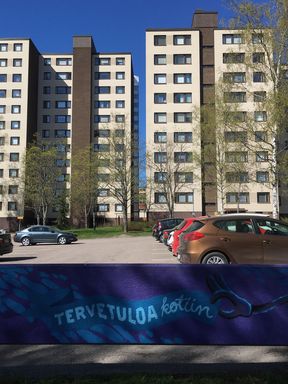Investors turn to suburbs – with varying results

Migration, market-driven housing policy and urban reform programmes have increased the interest of suburbs in the eyes of housing investors.
This is what Aalto University researcher Johanna Lilius and Jukka Hirvonen, a researcher for the City of Helsinki, stated in their recent study on how the interest of so-called institutional housing investors is reflected in the development of suburbs.
Lilius and Hirvonen compared two fast-growing suburbs of the 60s: Myyrmäki in Vantaa and Myllypuro in Helsinki. Myyrmäki is the most populous district in Vantaa, where nearly 100% of buildings are apartment blocks. Myllypuro is a more spaciously built district of eastern Helsinki with both single-family houses and blocks of flats.
In both areas, investors pointed the inexpensive land, good transport connections and urban renewal processes of the areas as the advantages. However, there were large differences in investment targets.
‘81 per cent of the dwellings built in Myyrmäki between 2008 and 2019 were one- and two-room-flats, and about half of them seem to have been leased. At the same time, more than 64 per cent of the new apartments in Myllypuro had at least three rooms’, says Lilius.
The difference is explained above all by the fact that Helsinki also demands the construction of large apartments suitable for families with children.
Johanna LiliusFor investors, small dwellings are profitable investment products and are therefore built if nothing else is stipulated.
In 2008, the share of privately leased housing in Myyrmäki was 18 per cent, while by 2019 it had risen to 29 per cent. At the same time, the share of housing leased by the city in the area decreased from 20% to 17%. Although the lease price level of private dwellings increased, the general price level of dwellings decreased, the share of higher education residents remained the same and the share of low-income people increased.
‘Thus, diversifying housing tenures does not automatically lead to an improvement in the level of education and income and a reduction in segregation’, Lilius says.
Who pays for it?
Myllypuro in Helsinki has often been considered a model of successful renewal of the suburb. Studies also seem to support the image. The share and income level of those with higher education has increased faster in Myllypuro than in other parts of eastern Helsinki, and the share of those with low incomes has declined. Housing prices have also risen faster than in other neighbouring areas.
However, not all residents of Myllypuro have benefited from the development, Lilius emphasises.
‘The share of housing leased by the city in Myllypuro is about one third. The city has decided that market prices in the area should also be reflected in the prices of social rental housing owned by the city, which means that low-income residents may have to move to a smaller apartment or to another neighbourhood.’
Lilius says that it would be important in the reform projects to ensure that the old residents can stay in the area and that the spirit of the area is preserved. She also hopes that a more lively discussion would take place in Finland on what increasing supply by liberalising the rental market means.
‘Of course, rental housing production on market terms increases supply, but what kind of quality does it produce, to whom and at what social costs?’
Link to publication https://rdcu.be/cv2tg
Further information:
Post-Doctoral Researcher Johanna Lilius, Aalto University
johanna.lilius@aalto.fi
Read more news

Postdoctoral researcher Eloi Moliner makes history as a 5-time award winner
Eloi Moliner is one of the most decorated doctoral researchers in Aalto University's history – we would like to highlight his success and contributions to the field of audio signal processing
2 million euro donation to Aalto University's new multidisciplinary Bachelor’s programme – Donors: Matti Alahuhta, Sari Baldauf, Antti Herlin, and Jorma Ollila
Set to launch in autumn 2027, the multidisciplinary Bachelor's programme combines technology, business, arts, and design
Having autonomy in your life is more important in wealthier countries, says new research on well-being
A worldwide analysis reveals a nuanced relationship between happiness, volition and wealth.






